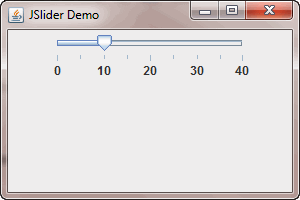

Jonkman and Kelman confirmed that 25% of flood deaths in the Netherlands occurred while walking. In some of the existing underground flood damage analysis studies, only the change of flood depth was analyzed according to the time of immersion in the underground space, and the type of damage was analyzed according to the flood damage history statistics of the underground flood.īefore analyzing flood risk in the underground space, the severity caused by storm flow force in order to estimate the degree of hydraulic force to the storm coming down with high velocity and high pressure through the inlet is described. Therefore, it is desirable to apply a horizontal two-dimensional (2D) hydraulic model to calculate the flow velocity and flood depth in a flow field in both longitudinal (i.e., streamwise spreading) and transverse directions. Although a three-dimensional (3D) hydraulic model yields the most accurate analysis results for numerical simulations of flooding conditions, it is still time-consuming, and the analysis involves complicated processes owing to the excessive computational load due to the huge number of calculation grids.

A numerical model is a favorable tool to predict the damage and range of flooding.

However, there is a lack of hydrodynamic-based modeling that analyzes, in detail, the flow through underground access stairways. Nowadays, a variety of models and approaches are used to determine inundation and flood damage. Underground linked complex facilities have blind spots where safety cannot be secured and can therefore be very vulnerable to disasters, as presented in Figure 1. Underground spaces vulnerable to flooding are becoming more complex and larger. The stormwater runoff that flows into underground spaces can cause human casualties and damage to property owing to its high flow velocity, despite its low water depth, as it rapidly gains in water pressure and momentum. The stormwater that accumulates on the ground moves to underground spaces along the roads drawn by the force of gravity and infiltrates the ground space through various pathways. With the simultaneous progress of urbanization and climate change, the frequency of flood damage has also increased. Typically, the size of the impervious layer in Seoul was 7.8% in 1962, but rose to 47.7% in 2010. As such complex facilities increase, covering more and more ground, impervious surfaces also continue to increase. As the number of buildings in urban centers are reaching saturation, underground space is being increasingly utilized for underground facilities, such as subways, shopping malls, substations, parking lots, and many others, which are densely distributed underneath the urban area. In addition to continuing industrialization, urbanization is also proceeding at an unprecedented rate, with increases in the number and heights of buildings that are used for various purposes, such as residential, commercial, and public buildings. This leads to an increase in the intensity and the frequency of heavy rainfall. With increasingly fast-paced industrialization, sudden climate change has been underway across the globe. Consequently, it will contribute to mitigating flood damage in an underground space. The proposed methodology incorporated with the inundation model can be applied to any underground space regardless of the location of stairs, the number of exits, shape of rooms, or layout of the floor. If people are in zones with a risk level of 4 or 5, a rapid evacuation is necessary for preventing human casualties. However, when the level of evacuation difficulty was considered, the risk level was dependent on the evacuation distance and location of the inlet and exit. If stormwater runoff enters an underground space, zones far away from the inlet usually have low risk levels. To investigate the level of evacuation difficulty, the spatial layout of rooms, together with walking speed, were considered in the risk analysis process. The flood momentum was computed by a 2D hydraulic flow model, and the flood intensity (FI) was employed to evaluate the consequence of flooding. This study presents the methodology of acquiring risk level considering both flood intensity and evacuation difficulty. Therefore, it is essential to predict the flood risk for proactive design. Increases in the frequency and severity of extreme rainfall might cause catastrophic submergence of underground spaces.


 0 kommentar(er)
0 kommentar(er)
